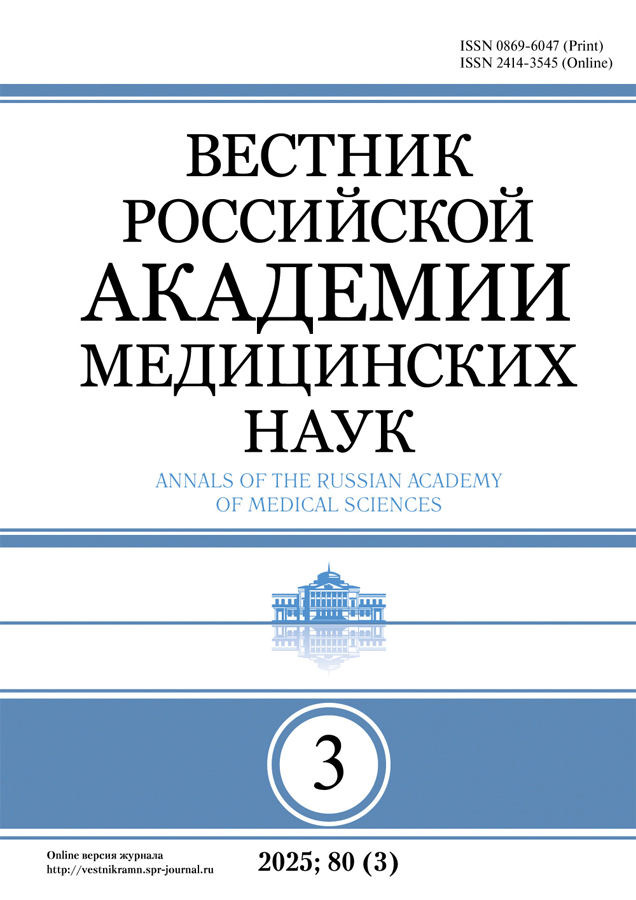The Predictability of Motor and Cognitive Impairment According to Brain Asymmetry of Cognitive Evoked Potentials P300 and Features of Symptom Complex in Patients with Parkinson’s Disease
- Authors: Poskotinova L.V.1, Krivonogova E.V.1, Khasanova N.M.2, Krasnikova M.N.2
-
Affiliations:
- The Institute of Environmental Physiology, Ural Branch, Russian Academy of Sciences
- Arkhangelsk Regional Clinical Hospital, Arkhangelsk
- Issue: Vol 71, No 1 (2016)
- Pages: 41-45
- Section: NEUROLOGY AND NEUROSURGERY: CURRENT ISSUES
- Published: 19.11.2015
- URL: https://vestnikramn.spr-journal.ru/jour/article/view/519
- DOI: https://doi.org/10.15690/vramn519
- ID: 519
Cite item
Full Text
Abstract
Link the degree of progression of motor and cognitive impairment in Parkinson’s disease and parameters of cognitive evoked potentials brain activity recognized not always unambiguous. This is due to the wide range of differences in amplitude and latency time of evoked potentials in the different leads of electroencephalogram caused functional reorganization of neuronal activity in brain structures in the early stages of the disease. Objective. The aim is to determine the correlation of the cognitive auditory evoked potentials P300 characteristics and symptom features in patients with Parkinson’s disease. Methods. The study involved 60 people, right-handers: 34 people (24 women and 10 men) with a verified diagnosis of Parkinson’s disease and the control group — 26 people (20 women and 6 men). The disease duration, severity of symptoms (Unified Parkinson’s Disease Rating Scale), and stage of the disease (Hoehn, Yahr) were determined, the 15-item Geriatric Depression Scale was used to indicate the depression symptoms. Assessment of the electroencephalogram and auditory evoked potentials P300 was performed by an electroencephalograph «Encephalan» (Medicom, Taganrog, Russia). The minimum amplitude and the maximum latency of P300 in electroencephalogram-leads (F3, F4, C3, C4, P3, P4, F7, F8, T3, T4, T5 and T6) on the right and left sides were determined. Results. A significant positive correlation between the amplitude of evoked potential P300 on the left and duration of Parkinson’s disease was revealed, moreover the severity of disease symptoms such as left-side resting tremors of the hand, left-side muscle tension of the hand and/or foot, rising from a chair without using their hands, posture disorder were established. Conclusion. Marked brain asymmetry in the form of increase of the P300 amplitude on the left side combined with a significant reduction in the P300 amplitude on the right side in contra lateral electroencephalogram-lead indicates unfavorable prognosis in relation to cognitive dysfunction and motor disorders identified with left-sided Parkinson’s disease onset.
About the authors
L. V. Poskotinova
The Institute of Environmental Physiology, Ural Branch, Russian Academy of Sciences
Author for correspondence.
Email: liliya200572@mail.ru
доктор биологических наук, кандидат медицинских наук, доцент, заведующая лабораторией биоритмологии
E. V. Krivonogova
The Institute of Environmental Physiology, Ural Branch, Russian Academy of Sciences
Email: elena200280@mail.ru
кандидат биологических наук, старший научный cотрудник
N. M. Khasanova
Arkhangelsk Regional Clinical Hospital, Arkhangelsk
Email: khasanovanina@rambler.ru
кандидат медицинских наук, врач-невролог
M. N. Krasnikova
Arkhangelsk Regional Clinical Hospital, Arkhangelsk
Email: kmn.murm@gmail.com
врач-невролог Russian Federation
References
- Сушкова О.С., Королев М.С., Габова А.В. и др. Совместный анализ сигналов электроэнцефалограмм, электромиограмм и механического тремора при болезни Паркинсона в ранней стадии // Журнал радиоэлектроники. – 2014. – No5. – С. 12. [Sushkova OS, Korolev MS, Gabova AV, et al. Sovmestnyi analiz signalov elektroentsefalogramm, elektromiogramm i mekhanicheskogo tremora pri bolezni Parkinsona v rannei stadii. Zhurnal radioelektroniki. 2014;(5):12. (In Russ).]
- Патент 2484766 RU. Опубл. 20.16.2013. Бюлл. No17. Обухов Ю.В., Королев М.С., Габова А.В. и др. Способ ранней электроэнцефалографической диагностики болезни Паркинсона. [Patent 2484766 RU/ 20.16.2013. Byul. No17. Obukhov YV, Korolev MS, Gabova AV, et al. Sposob rannei elektroentsefalograficheskoi diagnostiki bolezni Parkinsona. (In Russ).]
- Гнездицкий В.В., Корепина О.С. Атлас по вызванным потенциалам мозга. – Иваново: ПресСто; 2011. 528 с. [Gnezditskii VV, Korepina OS. Atlas po vyzvannym potentsialam mozga. Ivanovo: PresSto; 2011. 528 p. (In Russ).]
- Коберская Н.Н., Зенков Л.Р., Захаров В.В. и др. Когнитивный потенциал Р300 при деменции с тельцами Леви и болезни Альцгеймера // Журнал неврологии и психиатрии. – 2005. – No1. – С. 61–64. [Koberskaya NN, Zenkov LR, Zakharov VV, et al. Cognitive potential P300 in dementia with Levy’s bodies and Alzheimer’s disease. Zh Nevrol Psikhiatr im S S Korsakova. 2005;(1):61–64. (In Russ).]
- Kojovic M, Bologna M, Kassavetis P, et al. Functional reorganization of sensorimotor cortex in early Parkinson disease. Neurology. 2012;78(18):1441–1448. doi: 10.1212/wnl.0b013e318253d5dd.
- Ni Z, Bahl N, Gunraj CA, et al. Increased motor cortical facilitation and decreased inhibition in Parkinson disease. Neurology. 2013;80(19):1746–1753. doi: 10.1212/wnl.0b013e3182919029.
- Коберская Н.Н. Клинико-электрофизиологические характеристики когнитивных нарушений при болезни Паркинсона и симптоматическом паркинсонизме: Автореф. дис. ... канд. мед. наук. М.; 2003. 26 с. [Koberskaya NN. Kliniko-elektrofiziologicheskie kharakteristiki kognitivnykh narushenii pri bolezni Parkinsona i simptomaticheskom parkinsonizme [dissertation] Moscow; 2003. 26 p. (In Russ).]
- Алёшина Е.Д., Коберская Н.Н. и др. Когнитивный вызванный потенциал р300: методика, опыт применения, клиническое значение // Журнал неврологии и психиатрии им. C.C. Корсакова. – 2009. – Т. 109 – No8. – С. 77–84. [Aleshina ED, 45 Koberskaya NN, et al. Cognitive evoked potential P300: methodology, experience of use, clinical significance. Zh Nevrol Psikhiatr im S S Korsakova. 2009;109(8):77–84. (In Russ).]
- Быканова М.А., Пизова Н.В. Болезнь Паркинсона и функциональная асимметрия // Асимметрия. – 2012. – No1. – С. 4–16. [Bykanova MA, Pizova NV. Parkinson’s disease and functional asymmetry. Asimmetriya. 2012;(1):4–16. (In Russ).]
- Hoehn MM, Yahr MD. Parkinsonism: onset, progression, and mortality. Neurology. 1967;17:427–442. doi: 10.1212/wnl.17.5.427.
- Иваницкий А.М. Естественные науки и проблемы сознания // Вестник Российской академии наук. – 2004. – No8. – С. 716–723. [Ivanitskii AM. Estestvennye nauki i problemy soznaniya. Vestnik Rossiiskoi akademii nauk. 2004;74(8):716–723. (In Russ).]
- Sumich AL, Kumari V, Heasman BC, et al. Abnormal asymmetry of N200 and P300 event-related potentials in subclinical depression. Journal of affective disorders. 2006;92(2–3):171–183. doi: 10.1016/j.jad.2006.01.006.
Supplementary files








